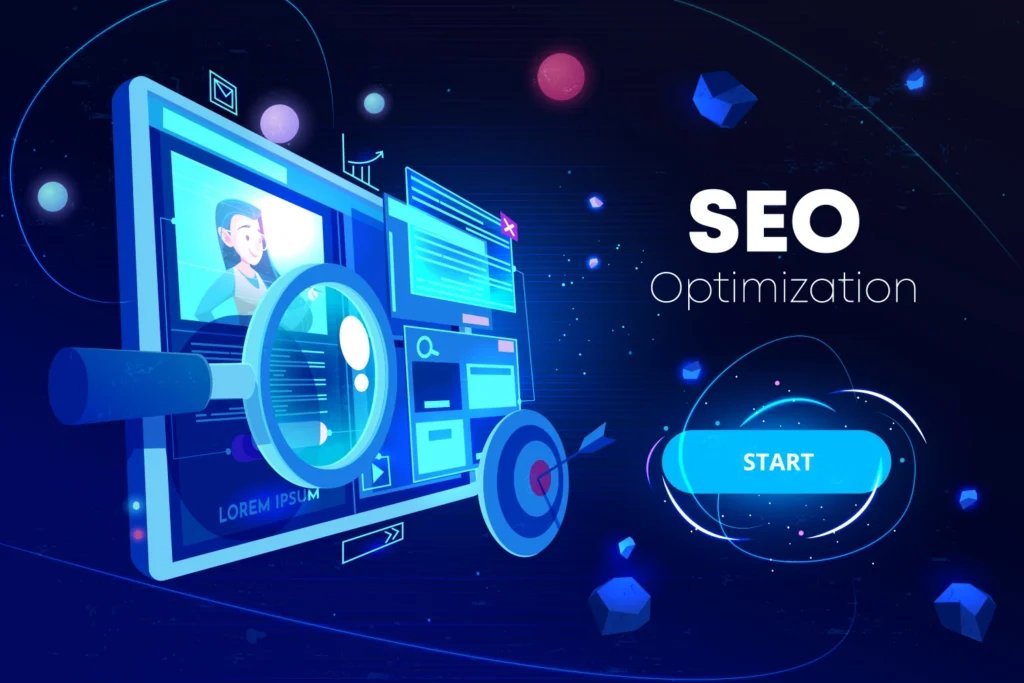Social Media Marketing (SMM)
Seo Optimizer

Social Media Marketing (SMM) refers to the use of social media platforms to promote a product, service, or brand. It involves creating and sharing content, engaging with followers, running ads, and analyzing the effectiveness of campaigns to drive brand awareness, website traffic, and ultimately sales or conversions.
Here’s a breakdown of key aspects of Social Media Marketing and best practices to help you effectively leverage social media for your business:
1. Key Social Media Platforms for Marketing
Each social media platform has its own strengths and audience, so understanding where your target audience spends their time is crucial.
- Facebook: Great for reaching a broad, diverse audience. It’s ideal for sharing a mix of content—photos, videos, links, and text posts. Businesses can also use Facebook Ads for targeted campaigns.
- Instagram: Best for visually-driven content like photos, short videos (Reels), Stories, and influencer marketing. It’s highly popular among younger audiences and brands in the fashion, beauty, food, and lifestyle industries.
- Twitter: Ideal for real-time updates, trending topics, and customer service interactions. It’s also a good platform for establishing thought leadership and engaging with your audience through hashtags.
- LinkedIn: A professional network best suited for B2B marketing, industry insights, and networking. It’s a great place for thought leadership, company news, and sharing job openings.
- TikTok: Extremely popular with younger audiences. This platform thrives on short-form, highly engaging videos. Brands use TikTok for viral marketing, challenges, and influencer partnerships.
- YouTube: The go-to platform for video content. You can share long-form tutorials, behind-the-scenes, product demos, and brand storytelling. YouTube Ads also allow you to target users with video ads.
- Pinterest: Great for driving traffic, especially for industries like fashion, home decor, beauty, and food. It’s a search engine and social platform, where users “pin” content they love.
2. Social Media Marketing Strategy
A well-thought-out strategy will guide your content creation, posting schedule, and engagement approach. Here’s how to build an effective strategy:
- Define Your Goals: Before starting any campaign, be clear about your objectives. Common social media marketing goals include:
- Brand Awareness: Increase visibility of your brand.
- Lead Generation: Generate potential customer inquiries or sign-ups.
- Sales/Conversions: Drive purchases directly from social media platforms.
- Customer Engagement: Build relationships and interactions with your audience.
- Know Your Audience: Conduct audience research to understand who your customers are, what they care about, and where they spend their time online. Tools like Facebook Insights or Google Analytics can help identify demographic information.
- Content Calendar: Plan your content ahead of time using a social media content calendar. This helps ensure consistency in your posting schedule and allows you to organize content around key dates, holidays, or product launches.
- Content Mix: Balance your content types:
- Educational: Value-driven content like how-tos, guides, and infographics.
- Entertaining: Fun, shareable content that engages users (memes, viral videos, etc.).
- Promotional: Product announcements, special offers, or deals.
- User-Generated Content: Encourage customers to share their experiences with your products or services.
- Behind-the-Scenes: Showcase the people and processes behind your brand.
- Hashtags: Use relevant hashtags to make your posts discoverable by a wider audience. You can research popular hashtags in your niche or create branded hashtags.
- Frequency: Consistent posting is crucial. Each platform has its ideal posting frequency:
- Facebook: 3–7 times per week.
- Instagram: 4–7 times per week.
- Twitter: 1–5 times per day.
- LinkedIn: 3–5 times per week.
- TikTok: 3–5 times per week.
3. Types of Content to Post
- Visual Content: Images, infographics, and short videos tend to perform well on social media. Platforms like Instagram and TikTok are particularly visual-driven.
- Videos: Short-form (like TikTok or Reels) and long-form (YouTube) videos can explain your products, tell brand stories, or provide educational content.
- Stories: Temporary content that disappears after 24 hours (available on Instagram, Facebook, LinkedIn, etc.). Stories are great for limited-time offers, behind-the-scenes looks, or engagement (polls, quizzes, etc.).
- User-Generated Content (UGC): Reposting content created by your customers or followers. This builds community and trust, and it’s often more authentic.
- Influencer Content: Partner with influencers who resonate with your audience. Influencer marketing works well, especially on Instagram, YouTube, and TikTok.
- Polls and Surveys: Engaging your audience through polls, surveys, and Q&A sessions can provide insights into customer preferences and build engagement.
4. Social Media Advertising
Paid ads on social media can help amplify your reach and target specific groups. Common ad formats include:
- Facebook & Instagram Ads: Carousel ads, video ads, slideshow ads, and story ads.
- Twitter Ads: Promoted tweets, trends, and video ads.
- LinkedIn Ads: Sponsored content, text ads, and InMail campaigns for B2B targeting.
- TikTok Ads: In-feed ads, branded challenges, and TopView ads.
- Pinterest Ads: Promoted Pins, shopping ads, and video ads.
Tips for Successful Social Media Ads:
- A/B Testing: Experiment with different visuals, copy, and targeting to optimize performance.
- Targeting: Social platforms offer powerful targeting options based on demographics, interests, behaviors, and custom audiences.
- Retargeting: Show ads to users who’ve interacted with your brand or website before.
